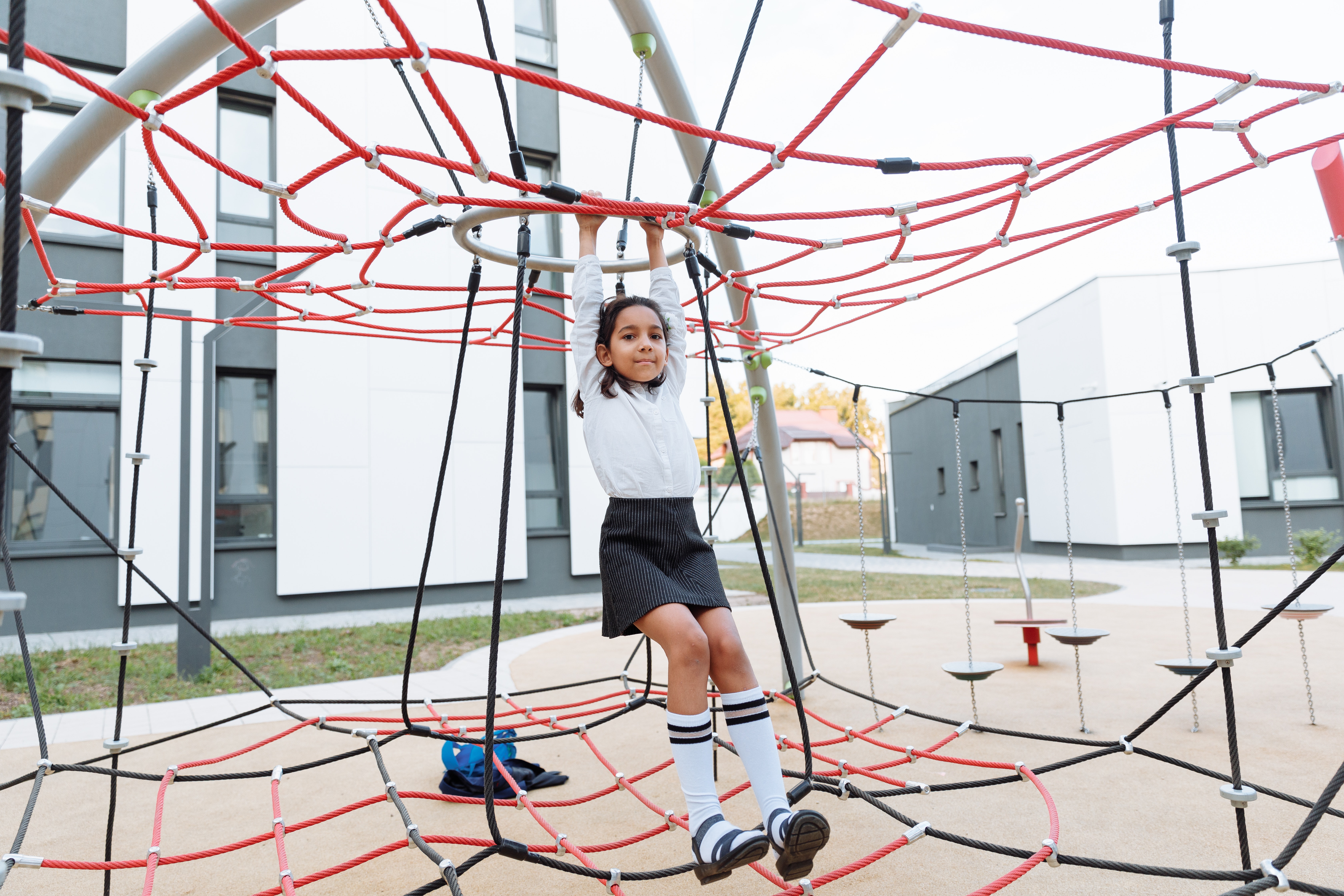
Written by: Nicole Corriveau, M.S., OTR/L
Occupational Therapist
Congratulations on making it this far! Learning about sensory processing can be overwhelming, especially if you have your own little one(s) struggling with Sensory Processing Disorder (SPD). This post will discuss the second set of categories that focus more on sensory-based motor functioning within SPD.
Sensory-Based Motor Disorder (SBMD)
This disorder encompasses impairment within a child’s proprioceptive and vestibular systems. Children with SBMD exhibit challenges with moving, stabilizing, and performing movement sequences. There are two subtypes that include:
Dyspraxia
Children with dyspraxia have difficulties with initiating a motor movement, completing unfamiliar movements, or have a breakdown in movement when there are multiple steps. This dysfunction can be in gross motor, fine motor, oral motor, or a combination of the three. They typically present with low frustration tolerance and may experience social rejection due to their awkward or inefficient movements. Below are red flags for each separate category:
- Gross motor
- Present as clumsy and awkward
- Slow to reach developmental motor milestones
- Significant challenges with riding a bike due to multiple layers of coordination involved in the task
- Difficulties on the playground, in sports, recess, and physical education classes
- Often bump into or trip over things due to lack of awareness of where their whole body is in space
- Fine motor
- Challenges in this area typically start to present around 1 year of age
- Difficulties may include: reaching for objects, holding small objects, and/or letting go/releasing objects volitionally
- Breaks toys unintentionally due to using too much force
- Trouble coloring inside the lines, poor handwriting
- Unable to dress self independently; cannot arrange clothing correctly on body
- Oral motor
- Challenges with coordination with mouth, tongue, and lips
- Babies may have difficulties with coordinating suck, swallow, breathe while drinking a bottle/breastfeeding
- Difficulties chewing and eating when they get older
- Significant drooling due to a constant open mouth
- Delays in speech due to challenges with coordination for lips and tongue to form words
Postural Disorder
It is difficult for children with postural disorder to organize their bodies enough to meet the demands of a motor task. They may have significantly low tone which impacts their ability to activate muscles within their bodies to stabilize and maintain an upright posture. These children may appear lazy, indifferent, unmotivated, and/or tired most of the time. Many children with postural disorder also have other subtypes of Sensory Processing Disorder. Red flags for postural disorder include:
- Poor muscle tone
- Appears to be weak compared to other similar-aged children
- Holds head up in hands while seated and/or leans against walls/furniture/people for support
- Challenges with bilateral coordination (using both hands at the same time to complete a task, such as using a rolling pin to roll out Play Doh or placing beads on a string)
- Unable to contract muscles and pull against another force to complete an activity, such as chin-ups
- Difficulties with crossing the midline of their body, which may include not exhibiting hand dominance by the time they are 4 or 5 years old (i.e., if something is on the left side of their body and they have an object in their left hand, they will set down the object in their left hand to pick it up rather than crossing their body to use their free right hand)
- Has poor endurance, gets tired easily
- Appears clumsy and falls over frequently, even while seated
Sensory Discrimination Disorder
This disorder presents as difficulty or inability to interpret and distinguish messages provided by different sensory systems. This can be present in any sensory system or a combination of multiple sensory systems. For example, a child may not be able to use their tactile system to “feel around” for a pencil inside their desk, as he or she is unable to tell the difference between a pencil and another object just by tactile input alone. These children often require extra time to process incoming sensory information, compared to other children who can perceive this same information quickly and with ease. The following red flags may be present:
- Not knowing exactly where someone or something is touching them on their body without needing to look at it
- Unable to judge how much force is required to complete a task, i.e., how much force is required to use a pencil while writing
- Not understanding if their body is in motion or is still
- Unable to identify and distinguish between different sounds
- Not knowing their way with directions around a familiar building
- Unable to recognize objects by shape
- Unable to differentiate smells and textures of foods
- Poor writing mechanics, such as correct spacing between words and/or on the lines
- Lack of understanding for what is being spoken to them when there is background noise present
You made it through three long blog posts about sensory processing! If anything you’ve read sounds like your child and you have concerns, contact our office at (248) 885-8240 and we can set you up with an occupational therapy evaluation. As mentioned, I also recommend reading the book Sensational Kids: Hope and Help for Children with Sensory Processing Disorder (SPD) by Lucy Jane Miller, Ph.D., OTR. Follow us on Facebook and Instagram!
